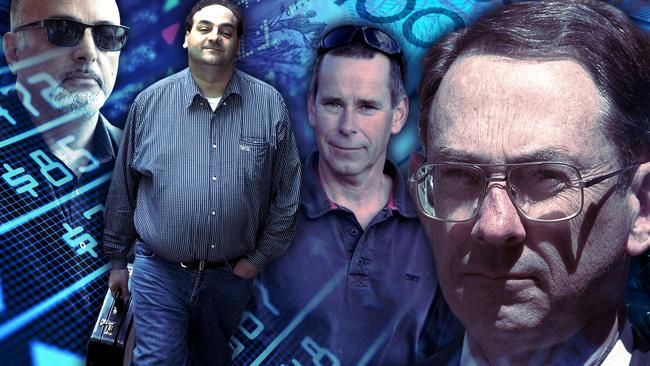In a little over two decades, they have successfully siphoned hundreds of millions of dollars from the pockets of South Australians – be they high-flying celebrities or vulnerable people in care.
Adelaide’s biggest corporate crooks have left a swath of destruction in their wake over the years. Here, in a special three part series, The Advertiser profiles the worst the South Australian business scene has to offer.
GIUSEPPE “JOE” MERCORELLA
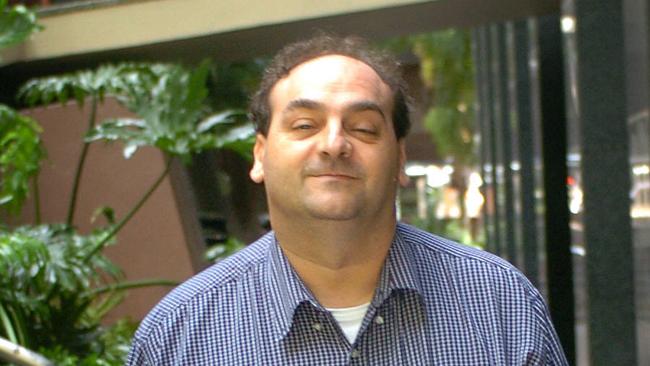
It started with promises of ludicrous investment returns scribbled out on scraps of paper, and ended with $75 million in losses and a five year jail term for Giuseppe “Joe” Mercorella – lawyer-turned Adelaide’s most notorious scammer.
Mercorella seemed an unlikely sort to end up in the clink – he graduated from Adelaide University with first class honours in law in 1984, and by the mid-2000s was also on the board of two promising oil and gas companies.
Behind the scenes however there was gambling, a lavish lifestyle, offshore investments – and a whole lot of lies.
Mercorella’s scam was one of the classics. Named for swindler Charles Ponzi, the “Ponzi scheme” involves taking money off people to invest, usually promising huge returns. In Mercorella’s case this was 2-5 per cent a month, or up to 80 per cent a year.
To keep eager punters signing up, you actually pay the interest for initial investors, generating word of mouth – in this case largely in Adelaide’s Italian and Croatian communities – and the cash keeps rolling in.
Mercorella’s scheme was so successful, liquidators eventually tallied up more than $200 million which had washed through his accounts, with total losses of just more than $75 million.
When the money stops rolling in, or investors ask for their initial investment back, things tend to get sticky however.
A creditors report filed in 2006 stated that from 2001 to 2005, Mercorella put $216.9 million through his Ponzi scheme’s bank account, paying back $183.6 million to the 80 or so investors, who were often given handwritten receipts on scraps of paper.
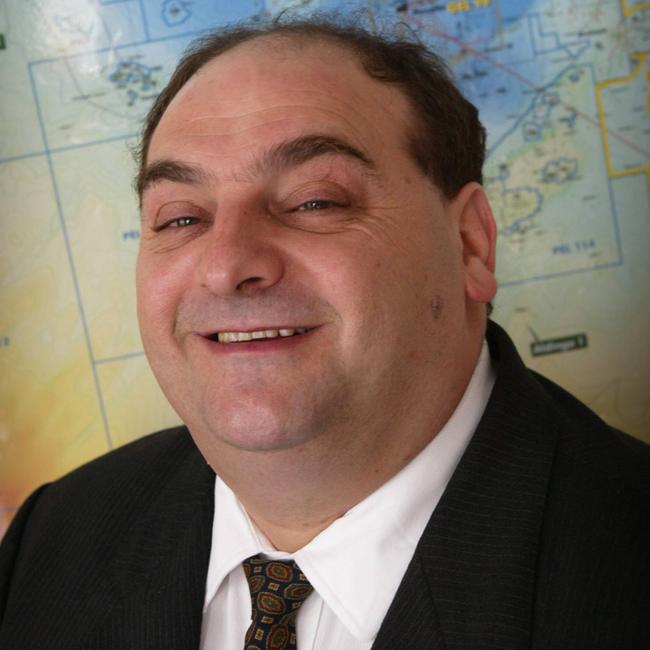
The administrator at the time said Mercorella had gambled $5.9 million of the money away, used $3.7 million for share trading and another $6 million for property investments.
About $1.5 million was used for Mercorella’s lifestyle and luxury car.
The total investor losses were later revised up to more than $75 million.
Mercorella pleaded guilty to 37 offences, the most serious relating to running the scheme, and also admitted to stealing $1.035 million and $2.17 million, respectively, from two Australian Stock Exchange listed companies, Entek Energy and Lion Energy.
In another twist to the tale, leading Melbourne barrister Peter Hayes, 54, who had travelled to Adelaide to represent one of the creditors in court, was found naked and unconscious in an Adelaide hotel room in May 2007 after a drug overdose.
The Queen’s Counsel had dined with a witness in the case, before entertaining two prostitutes in his room at the Stamford Plaza Hotel.
Police suspected that his death had been drug related. He died 10 days after being found unconscious in his hotel room, however the coroner’s findings into the death were never released.
– Cameron England, Business Editor
DENNIS CRAIG TELFORD

Told, just after the turn of the millennium, he had no money to pay his employees, trucking magnate Alan Scott may well have blamed the Y2K bug for the problem.
But it was no computer glitch that had left Mount Gambier’s K & S Corporation unable to make payroll – it was all the doing of the man Scott trusted more than any other.
For the four years previous, K & S’ mild-mannered accountant had been siphoning funds from its coffers, stealing $22 million in all.
Dennis Craig Telford was the last person anyone would have expected of betraying the boss, and yet it was that unassuming facade that allowed his offending to go on for so long.
Telford was not malicious, nor did he bear any form of grudge against Scott.
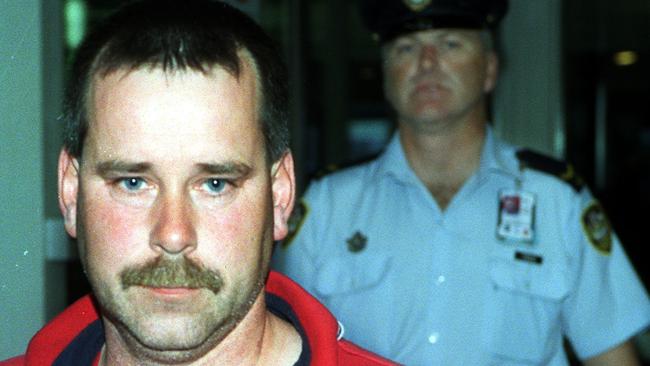
His personal demon was gambling – a problem he had kept largely under control during his 14-year stint with K & S, before coming unstuck in 1999.
By that time, his $120,000-a-year salary wasn’t enough to feed his voracious appetite for horse racing as his one-time hobby snowballed into an all-consuming obsession.
Just years earlier, in 1995, he’d kept a tight rein on his punting by opening accounts with both a licenced bookmaker and a business called Number One Betting Shop.
As he started amassing wins – which in turn allowed him to buy shares in other companies, properties and thoroughbreds of his own – Telford became a fanatical gambler.
One horse set him back $350,000, while his BMW boasted an eye-watering for the time – $70,000 price tag.
All the while, Telford’s credit card groaned under a $241,000 debt – and so his offending began.
Having earned Scott’s complete trust, Telford ran K & S’ books without oversight and with virtual impunity – the boss had no idea his riches were being drained, day by day.
Nor did the employees who unwittingly did Telford’s bidding, dutifully transferring funds from one account to another.
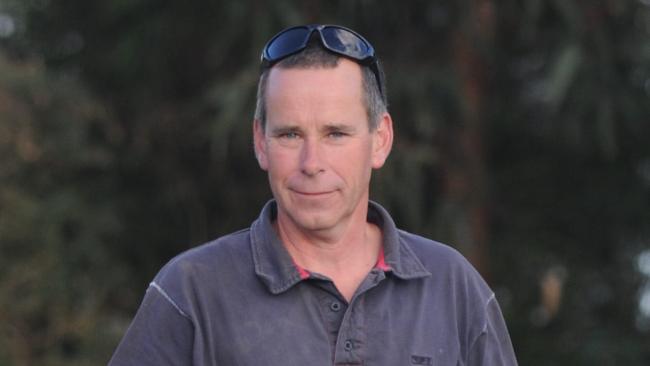
In the early days of electronic transfers, they had no way of knowing the recipient of each deposit was Telford himself.
By the time the payroll came up short, Telford had woven a complex web of false debts, forgery and deliberate accounting errors to hide his withdrawals.
It was not, however, complex enough to deceive SA Police detectives and forensic accountants.
Telford went before the Supreme Court and confessed to his offending, receiving a 14-year prison term with a non-parole period just shy of 10 years.
Tragically, the damage wrought by his offending went far beyond the financial.
Morale within K & S was greatly affected, with those who Telford duped left struggling with guilt, depression and self-recrimination.
Scott was deeply betrayed, feeling as though he had placed his faith in the wrong person.
Telford’s wife and children were left to face the seismic fallout of being intimately linked with the man who’d rocked the core of the South East’s economy.
They were also burdened with a stratospheric legal bill – too big to hope to ever pay – incurred by his multiple court appearances.
Worst of all they, like Scott, had been betrayed by someone in whom their had complete and utter faith – leaving them unwilling to ever trust again.
– Sean Fewster, Chief Court Reporter
MICHAEL SAMRA
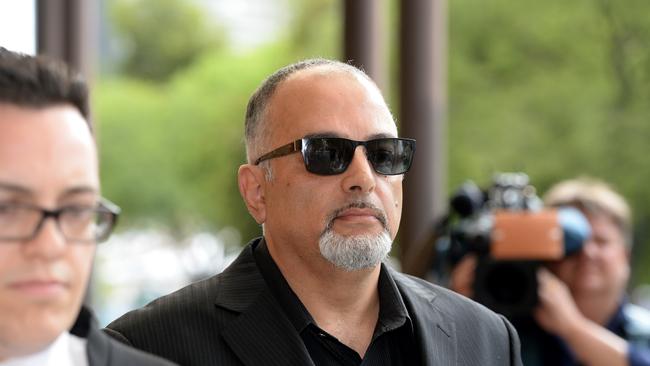
For the best part of 2009, Adelaide businessman Michael Samra walked a tightrope.
He knew the money flowing into his Norwood lending business from investors chasing the outrageously generous interest rate on offer wasn’t keeping pace with the money being paid out to other investors he already had on his books.
His predicament had been growing increasingly dire each week – to the extent he had exceeded his credit limits with BankSA on 298 days in just a 12 month period.
By August in 2009, Samra knew the game was up. He knew the investment scheme he was operating – a Ponzi scheme – was teetering on collapse.
It is highly likely that word of his financial peril had spread among his clients and the run on his ledger as worried investors sought to reclaim their cash was on. It was a run he knew he could not hope to satisfy.
On Sunday August 1 Samra attempted to take his own life. He would spend the next few weeks in Royal Adelaide Hospital recovering, followed by many more months in a mental health facility recovering from a complete breakdown.
The morning after his suicide attempt the telephone of his Osmond Tce office was running hot. Dozens of investors who had trusted Samra with their cash – after being promised returns of up to 35 per cent – had learned his company the Adelaide Lending Centre had collapsed, and attempted to recover their cash.
Those who lost tens of millions of dollars when the scheme collapsed include several high-profile Adelaide businessmen and home builders, a former AFL player and dozens of “mum and dad’’ investors – many of whom lost their superannuation.
A number of investors were local and interstate organised crime figures and one high-profile bikie and members of his family. One individual lost more than $11 million.
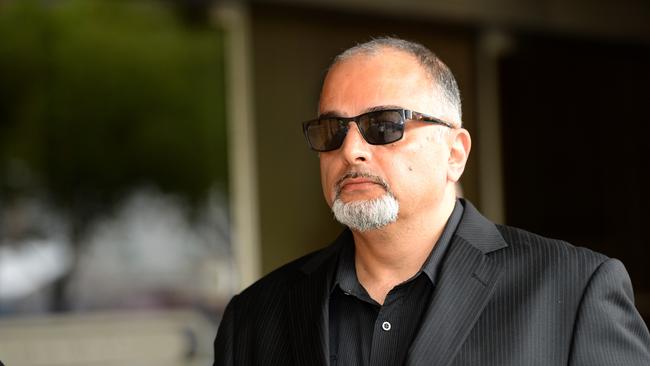
Following a lengthy investigation by SA police fraud investigators and ASIC, Samra was charged in 2015 with 12 counts of deception involving $12 million he received from 12 investors.
In August 2017, District Court Judge Geraldine Davison sentenced Samra, 57, to eight years and nine months in prison with a non-parole period of four years and six months after he pleaded guilty to six counts of deception involving $2 million of investors’ cash.
In sentencing, she described his behaviour as “premeditated, deliberate and repetitive”.
The Samra saga ended last November when it was revealed a long-running civil claim launched by a consortium of investors who lost money in the collapse, against Samra’s banker BankSA, had been settled out of court.
Although those involved in the class action lost around $25 million between June 2007 and August 2009 when the scheme collapsed, total loses are believed to be more than $60 million, with some investors opting not to be involved in the class action.
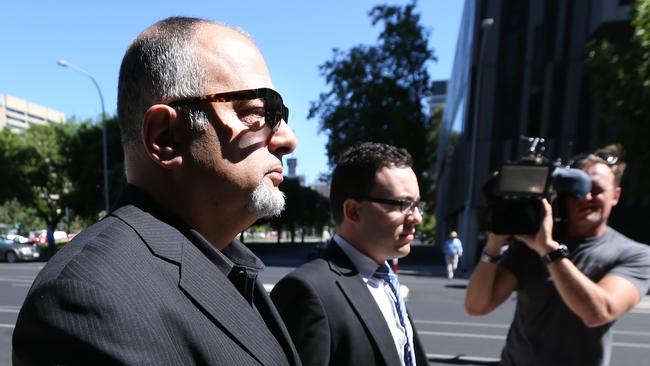
Those involved in the class action alleged that BankSA, as banker to Samra’s Adelaide Lending Centre Group and Samra, had relevant knowledge of the facts and circumstances of the Ponzi scheme and “thereby knowingly assisted in that conduct and knowingly received monies loaned to Samra and the ALC group”.
When ratifying the settlement, Federal Court Judge Michael Lee described Samra as “a rogue”.
“Like many rogues, he has left a trail of destruction, including causing very considerable financial and untold emotional damage to a large number of people, including some of the group members in these proceedings,’’ Justice Lee stated.
While those investors received some of their cash back, the remainder received next to nothing, despite liquidators to Samra’s companies selling his Burnside home for $2.9 million, along with three other Samra properties – most of which were heavily mortgaged.
Samra is eligible for parole next year.
– Nigel Hunt
If you need someone to talk to, reach out for help. Call Lifeline: 13 11 14 or visit the website or Beyond Blue: 1300 22 4636 or visit the website.
TIM MARCUS CLARK
There’s an argument to be made that, since World War II no figure has had as big an impact on South Australia as Tim Marcus Clark. Not Thomas Playford. Not Don Dunstan. Not even Russell Ebert or Tony Modra.
No, there is certainly a case to be made that the bespectacled, grey-looking banker from Dubbo, NSW tops the lot.
It’s been almost 30 years since Marcus Clark stepped away from the ruin he created as chief executive of the State Bank of South Australia, yet his name remains a byword for corporate crookery, incompetence and sheer plain bastardry.
The numbers are still staggering. The Bank blew up more than $3 billion in an orgy of capitalist frenzy, lending money to every shyster, conman and chiseller who knocked on its door at King William St.
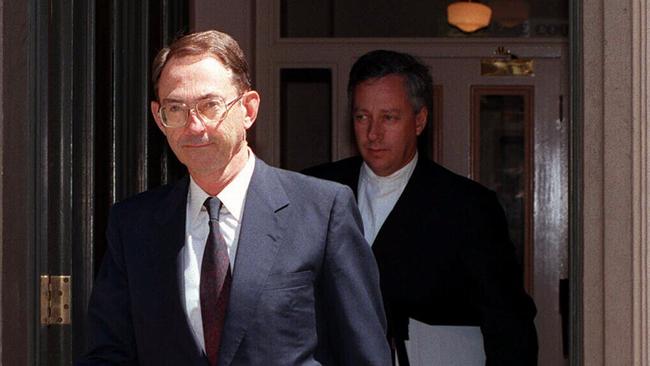
But more than the money was how the repercussions of failure seeped into the state’s psyche. South Australia carried the consequences of Tim Marcus Clark for decades. Debt levels soared, economic growth stalled, self-confidence seeped away. It ruined a Labor government, and a premier in John Bannon, who was widely seen to be asleep at the wheel, and in thrall to the banker, allowing Marcus Clark free rein to indulge his megalomaniacal tendencies.
The State Bank is the scar that never quite heals. The itch that never goes away.
It all started in 1984 when the State Bank of South Australia merged with the Savings Bank of South Australia and Marcus Clark became managing director of the new entity.
This being South Australia, both banks were naturally careful, traditional cautious outfits. They were old-fashioned community banks with history stretching back to the 1800s. Marcus Clarke had bigger dreams.
In his 2002 book Things Fall Apart: A History of the State Bank of South Australia, professor Greg McCarthy put it this way.
“The bank at its height had branches in London and New York and tax havens in the Cayman Islands, financing such ventures as the new (Rundle Mall) Myer complex, the renovation of (London’s) Wembley Stadium, mezzanine financing of apartments in New York, office blocks in Sydney and Melbourne, as well as holiday resorts on the Gold Coast,” Professor McCarthy wrote.
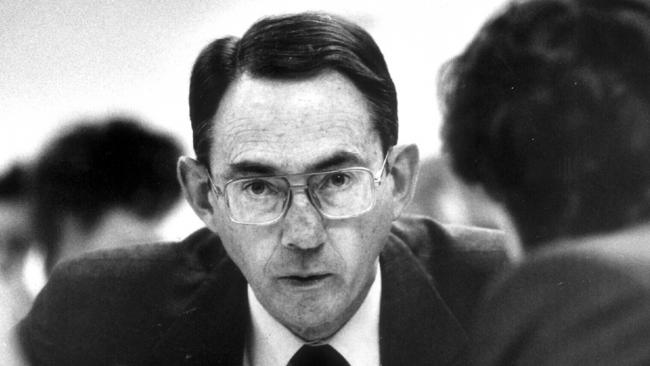
Even the stock market crash of 1987 wasn’t enough to slow Marcus Clark down. The lending practices became looser and looser as he chased his ambition to make the bank a global powerhouse.
In the Royal Commission into the bank’s eventual failure, Commissioner Samuel Jacobs said the board’s mentality was to lend whatever a client wanted to borrow and didn’t worry about mundane items such as cash flow or capacity to repay.
In addition, the bank breached its own prudential guidelines and granted exemptions on “scanty grounds”.
All of which saw the bank’s asset base grow from $3.4 billion in 1985 to $21 billion five years later. But then the economy collapsed in 1990 and 1991.
The State Bank lost $700 million alone in one deal – the development of the Remm Myer Centre in Rundle Mall.
On February 10, 1991, Premier Bannon announced the worst financial disaster in the state’s history. Marcus Clark was fired and fled to Melbourne.
The SA Government would sue Marcus Clark for $81 million but he declared himself bankrupt in 1996, telling a court he had only $47 in the bank and $20 in cash. In February, 1999, he settled the $81 million claim for $1.5 million.
Marcus Clark kept a low profile for the rest of his life. He died on December 11, 2015, aged 83 in Sydney. Two days later former premier John Bannon also passed away.
– Michael McGuire

